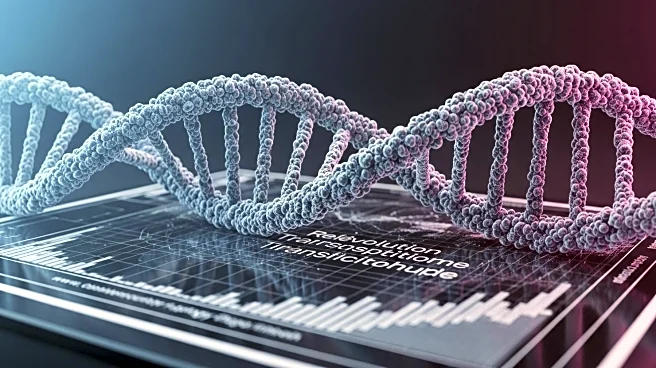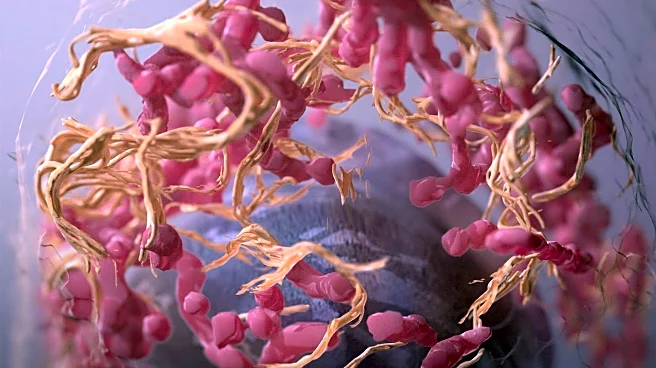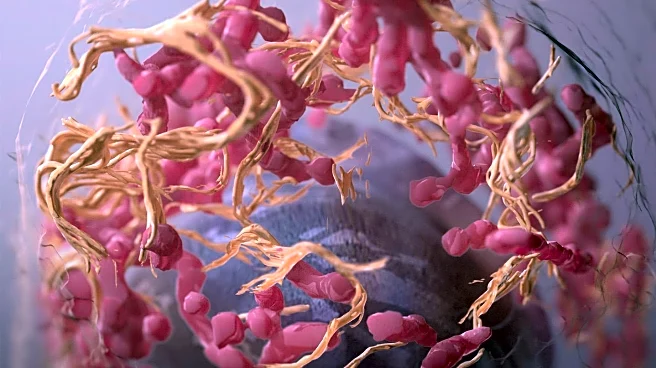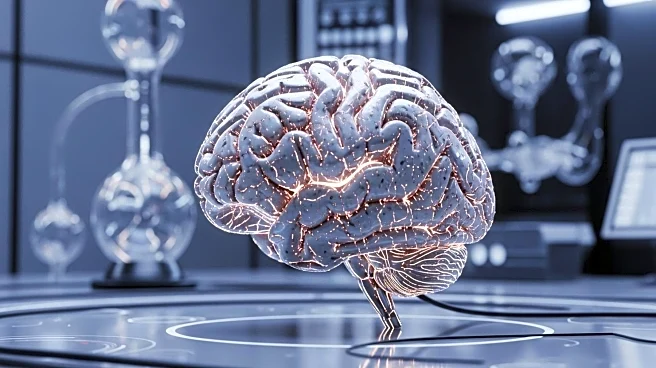What's Happening?
Recent advancements in spatial biology techniques have led to the development of Spatial-DMT, a pioneering spatial multi-omics technology. This technique enables simultaneous profiling of DNA methylation and RNA expression in intact tissues, approaching single-cell granularity with 10 μm resolution. Spatial-DMT has demonstrated high reproducibility and concordance with established single-cell and spatial transcriptomic references. When applied to mouse embryos, it revealed dynamic methylome changes during embryogenesis and resolved neuronal landscapes in postnatal brains. This technology addresses the challenge of understanding spatial epigenetic regulation without disrupting native tissue contexts, offering detailed insights into methylation biology and its interplay with gene expression.
Why It's Important?
The introduction of Spatial-DMT marks a significant advancement in biological research, particularly in understanding complex diseases like Alzheimer's and cancer. By providing detailed spatial maps of DNA methylation and gene expression, researchers can better understand disease mechanisms and treatment responses. This technology enhances the ability to study epigenetic regulation in its native context, potentially leading to breakthroughs in disease modeling and therapeutic strategies. Industries involved in biotechnology and pharmaceuticals stand to benefit from these insights, as they can lead to more targeted and effective treatments.
What's Next?
The broader application of Spatial-DMT across various tissues, developmental stages, and species is expected to establish its generalizability for spatial multi-omics profiling. Researchers anticipate further integration with public single-cell transcriptomic data to enhance understanding of developmental processes. The technology's potential to revolutionize epigenetic research could lead to new collaborations between academic institutions and biotech companies, aiming to explore its applications in translational research and personalized medicine.
Beyond the Headlines
Spatial-DMT's ability to maintain tissue integrity while profiling molecular interactions opens new avenues for ethical research practices, minimizing the need for invasive procedures. This approach could shift the paradigm in studying developmental biology and disease progression, fostering a deeper understanding of the spatial organization of biological molecules. Long-term, this could influence regulatory policies on genetic research and data sharing, promoting transparency and collaboration in the scientific community.











